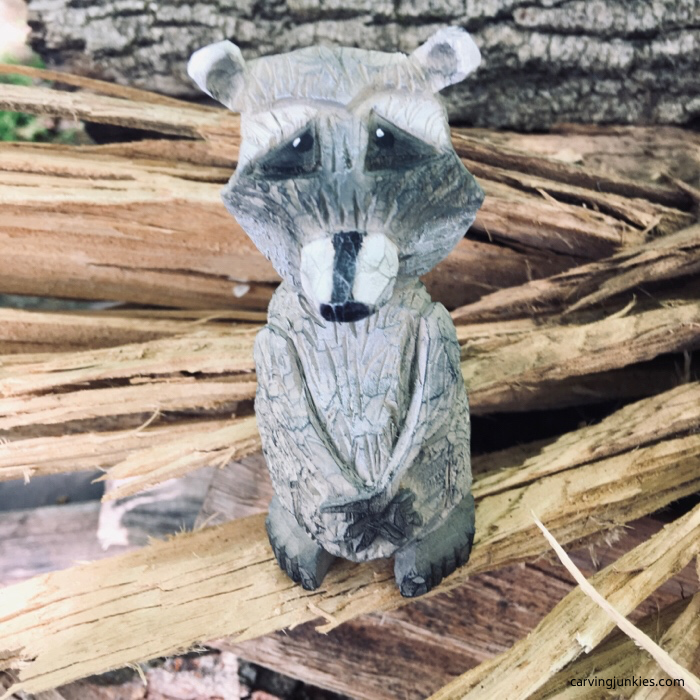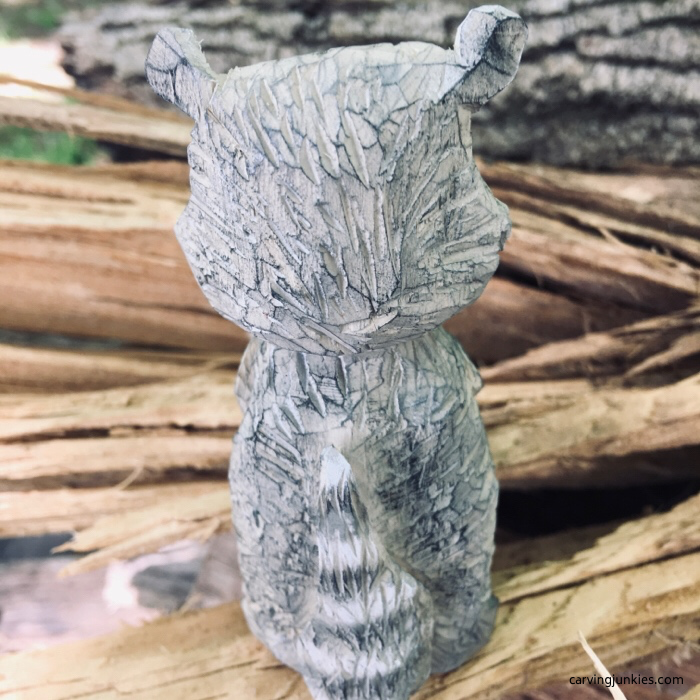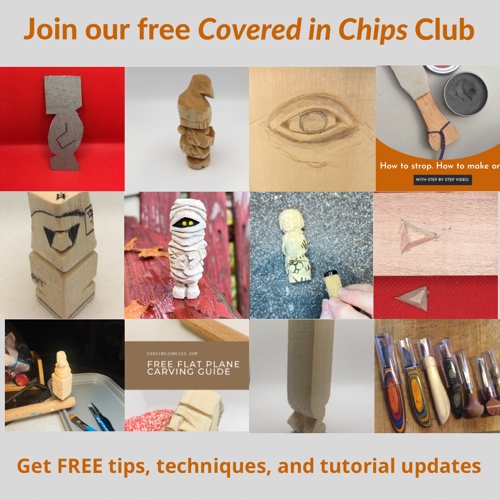- Home
- Carving wood animals
- Racoon wood carving
Cute raccoon wood carving tutorial
You can easily make this adorable critter with our simple steps.
Our raccoon wood carving tutorial combines a little bit of realism with a dash of cuteness to make a beautiful carving that will bring a smile to anyone's face. Just grab a sharp knife and get started.
What you will need for this raccoon wood carving tutorial
- Basswood block (ours is 1.5 x 1.5 x 3 inches/3.81 x 3.81 x 7.62 cm).
- Carving knife of choice (we use a large roughout knife and a smaller detail knife).
- 60-degree angle V-tool (if you don't have one a knife will also work).
- Paints and paint brushes of choice (we use acrylic paints and provide water ratios).
- Pencil (magic marker is optional).
- Carving gloves (be safe!).
Raccoon wood carving tutorial at a glance
1. Draw your guidelines
- Draw a line 1.5 inches (3.81 cm) from the top all around the wood block to indicate where you will separate the head from the body (photo 1).
- Since you will carve the front of the head off the corner, draw two small marks on top where you will make cuts to start the ears (photo 2).
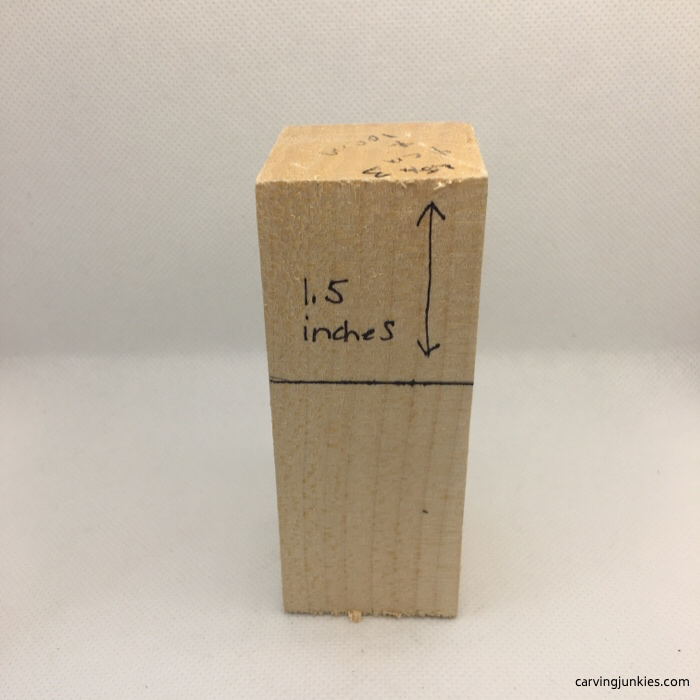 1. Draw a line 1.5 inches from the top
1. Draw a line 1.5 inches from the top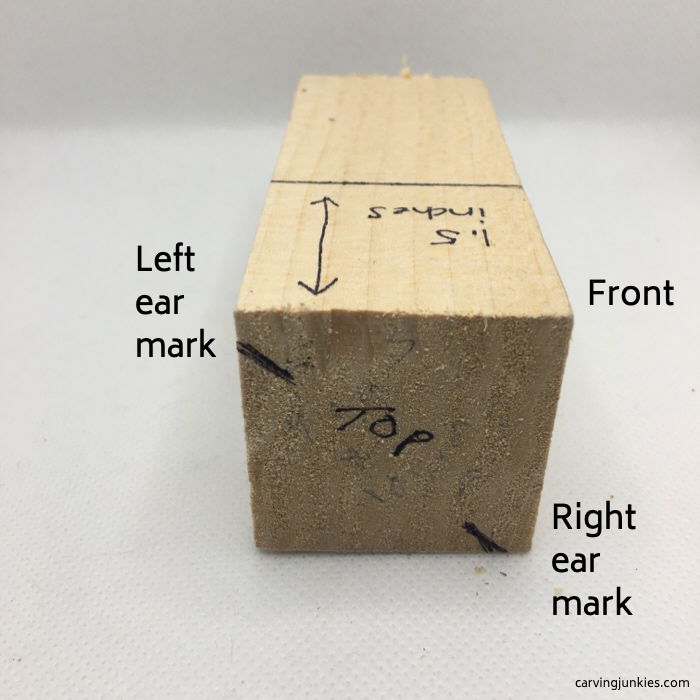 2. Two marks on top where you will cut the ears
2. Two marks on top where you will cut the ears2. Round off the corners
- Use a sweep cut (or push cut) to round each of the four corners (photo 3).
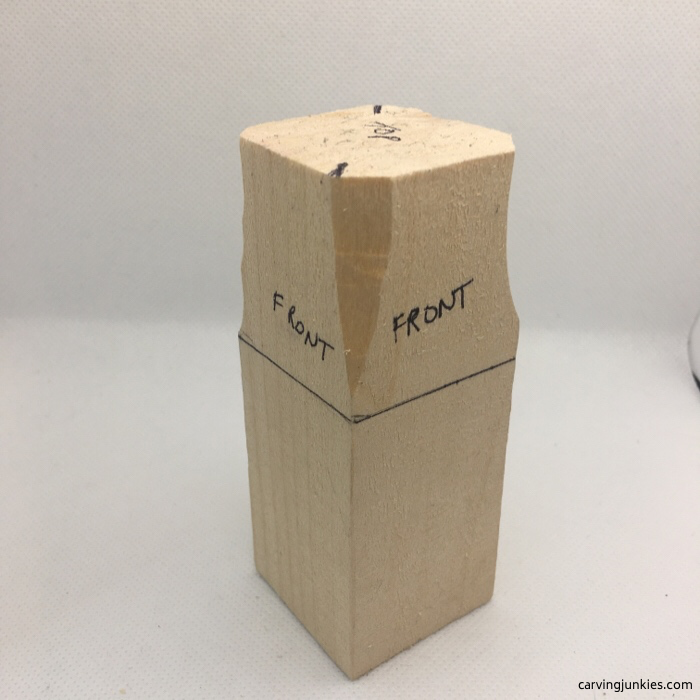 3. Round the corners all around
3. Round the corners all around3. Separate the head from the body
- Make a stop cut in each corner and remove wood from underneath to create a notch (photos 4-7).
- Make larger stop cuts between the notches to separate the head (photo 5).
- Make angular cuts on each side of the face so the top and bottom meet at a point on each side (photo 5).
- Draw marks on the front to indicate how far down the ears will go (photo 6).
- Cut into the ear guideline on the top of the head. Make a perpendicular cut from the front to remove wood for each ear (photo 7).
- Round the head (photo 7).
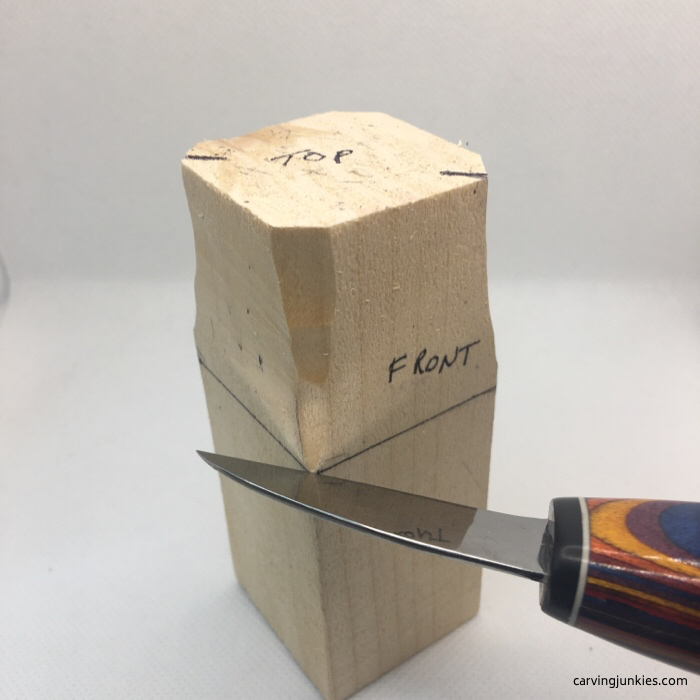 4. Use a stop cut to notch all four corners
4. Use a stop cut to notch all four corners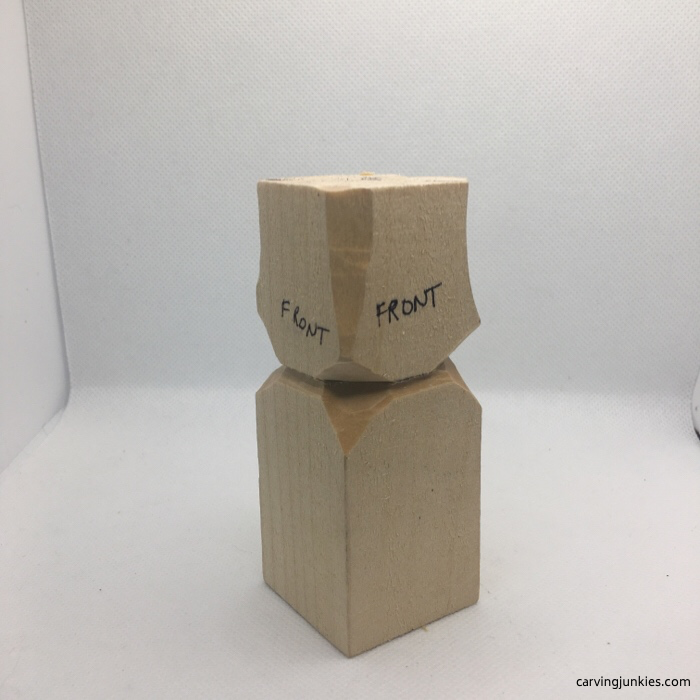 5. Use stop cuts in between to separate the head
5. Use stop cuts in between to separate the head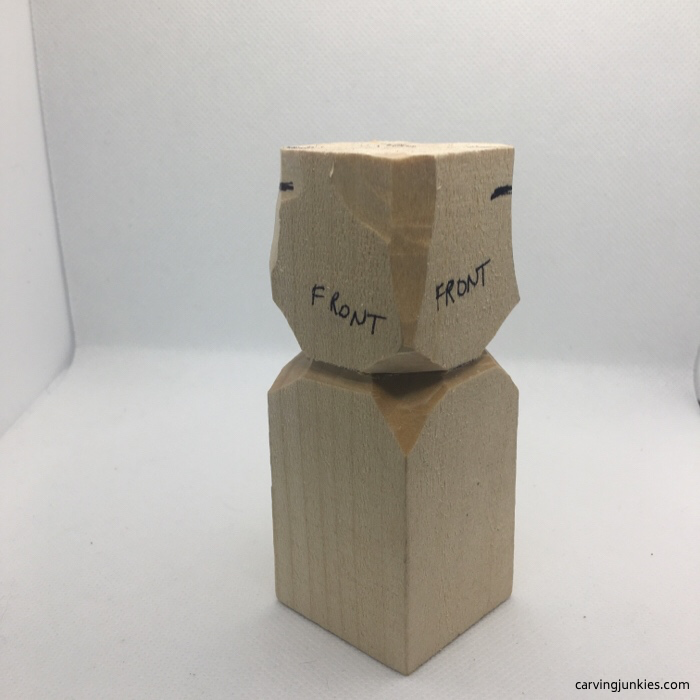 6. Lines mark how far down the ears will go
6. Lines mark how far down the ears will go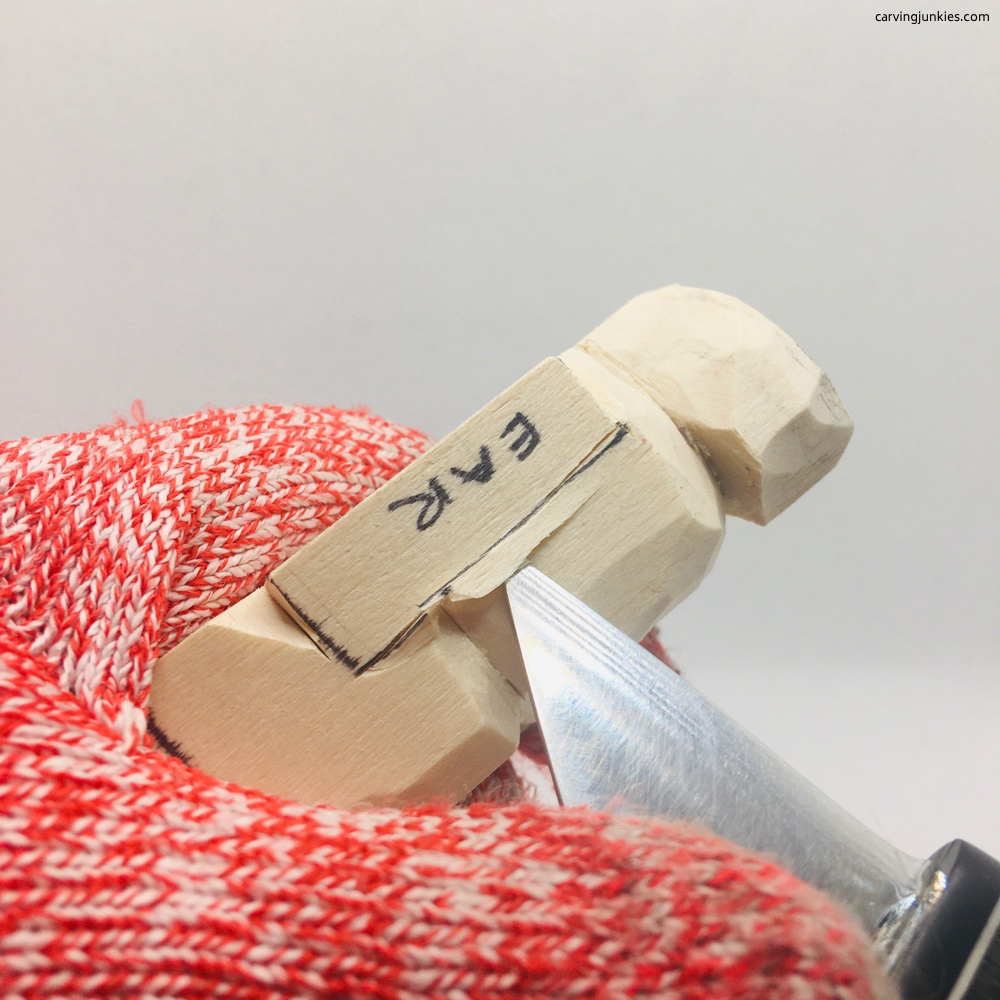 7. Ears are started and the head is rounded
7. Ears are started and the head is rounded4. Draw guidelines for the face
- Draw an oval line to mark the snout (photo 8).
- Make a stop cut at the top of the snout and remove some wood underneath it (photo 8).
- Define the top of each eye socket (photo 9).
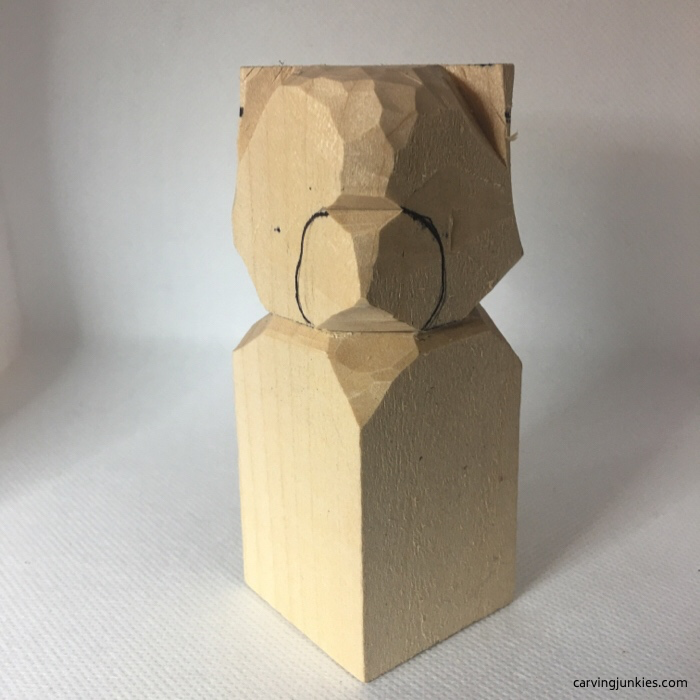 8. Stop cuts mark the top and bottom of the snout
8. Stop cuts mark the top and bottom of the snout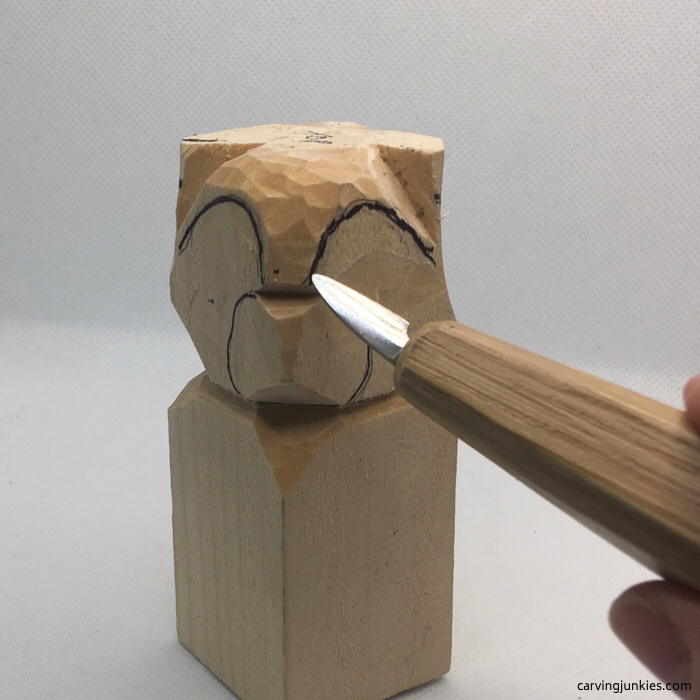 9. Define the eye sockets
9. Define the eye sockets5. Carve the snout
- To create the snout, use a push cut to shave wood off evenly all around. It is a bit like you would sharpen the point of a pencil (photo 10).
- Remove wood from underneath at an angle so the nose tilts up a bit (photos 11,12).
- Reduce a little wood from the eye sockets (photo 8).
- Start to round the back of the head (photo 13).
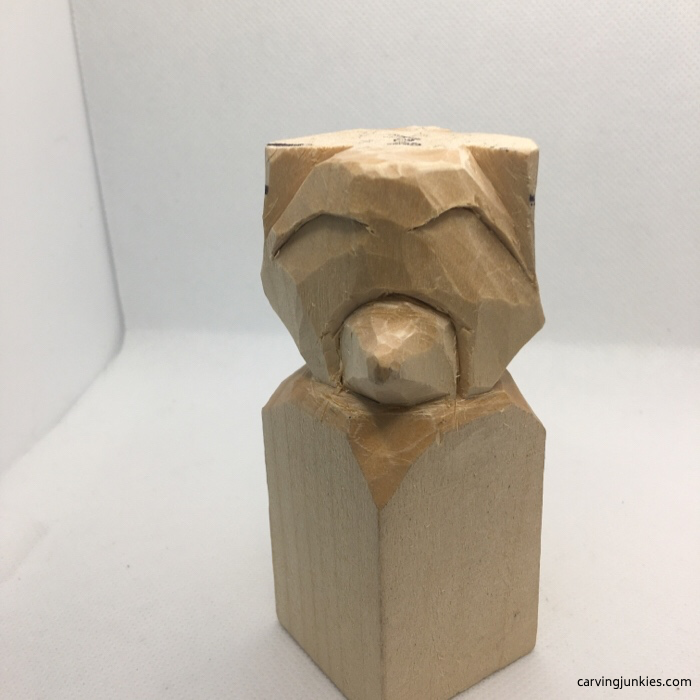 10. Snout is shaped and the eye socket is defined
10. Snout is shaped and the eye socket is defined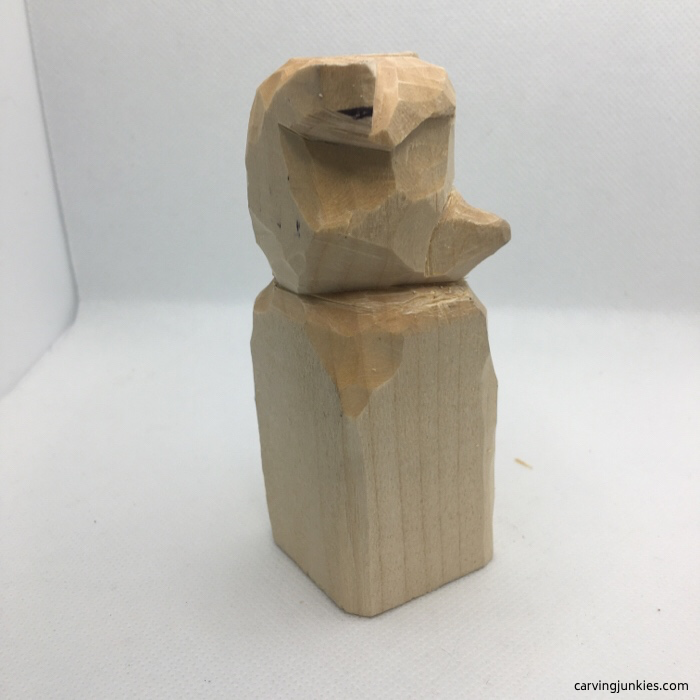 11. Right side view
11. Right side view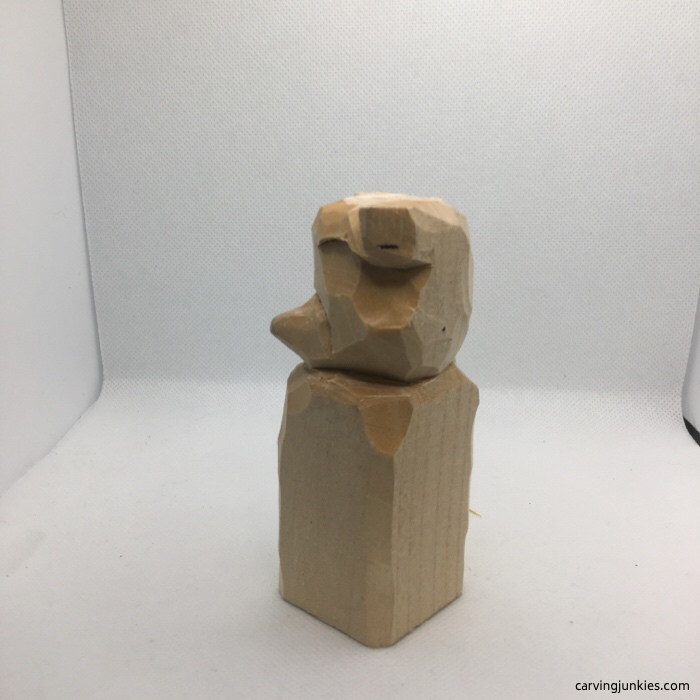 12. Left side view
12. Left side view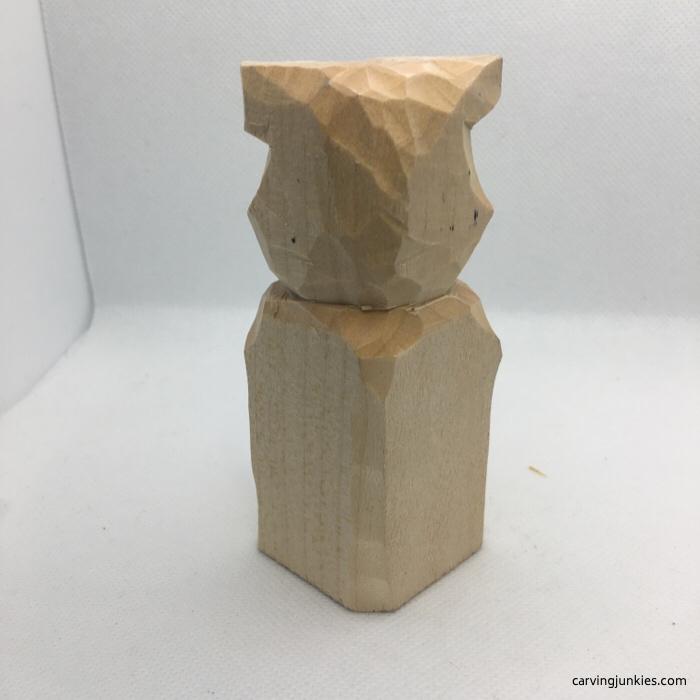 13. Back of the head is rounded
13. Back of the head is rounded6. Draw guidelines for the body
- Draw the pear-shaped underbelly on the raccoon wood carving (photo 14).
- Roughly mark where the arms, legs, and feet will go (photos 14-16).
- Draw a bushy tail on the back (photo 17).
- Use push cuts to deepen the eye sockets and smooth the area between the eyes (photos 14, 15).
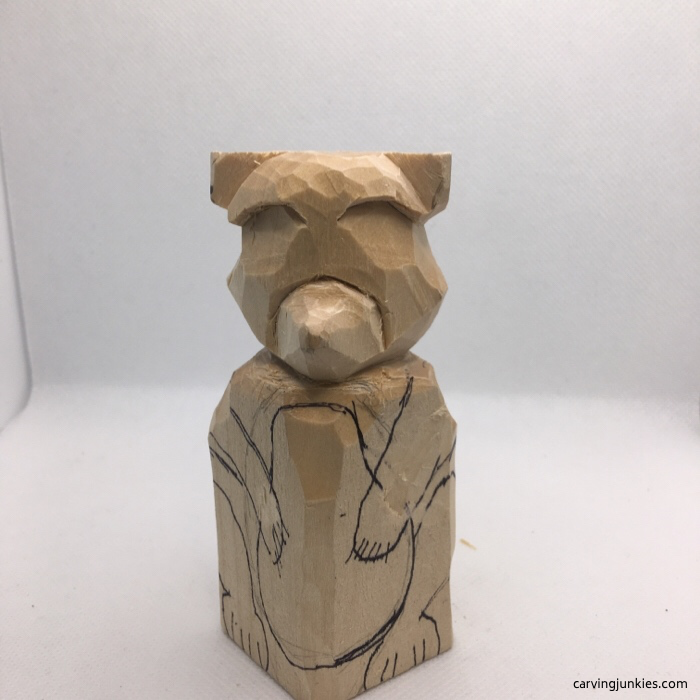 14. The arms, belly, and legs are drawn
14. The arms, belly, and legs are drawn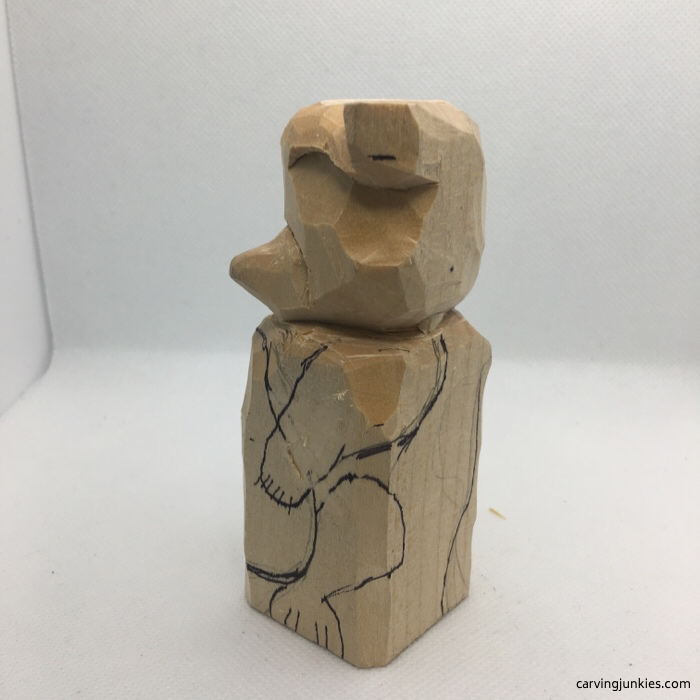 16. Left side view
16. Left side view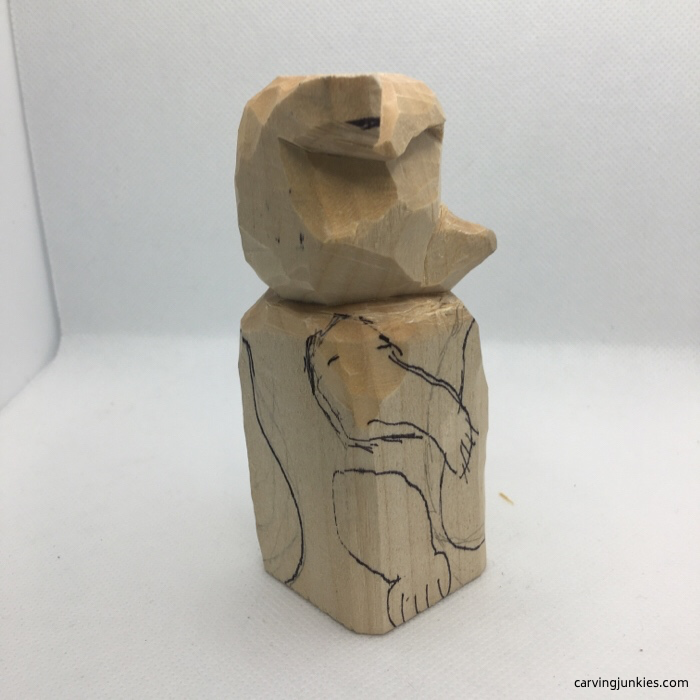 15. Right side view
15. Right side view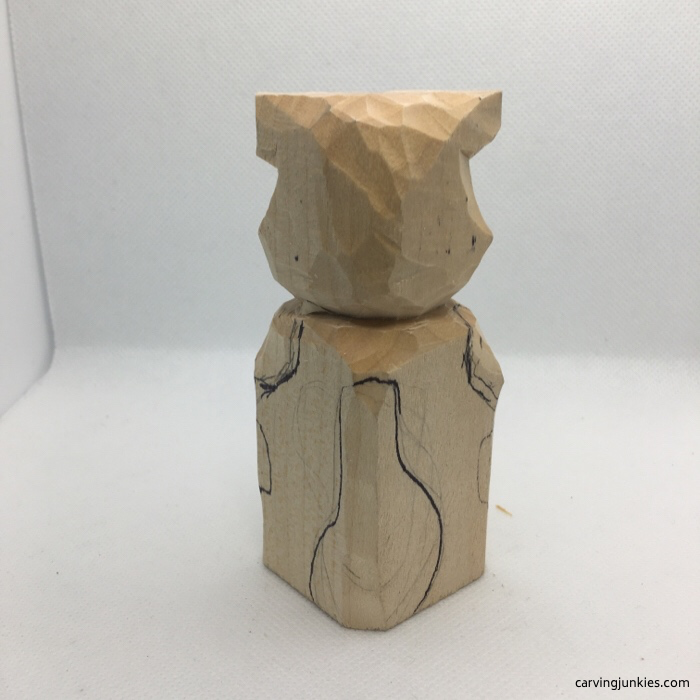 17. Tail is drawn
17. Tail is drawn7. Round the body
- Start to round the shoulders and the corners on the body.
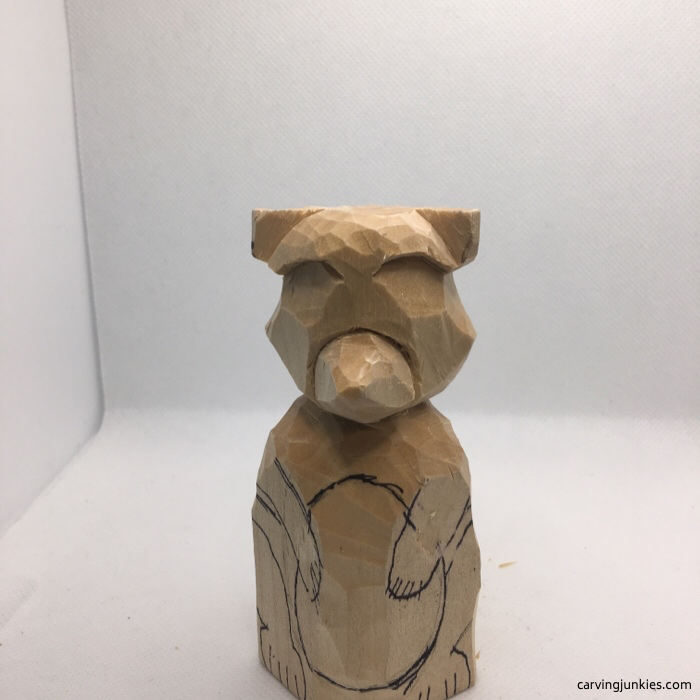 18. Shoulders are rounded
18. Shoulders are rounded 20. Left side view
20. Left side view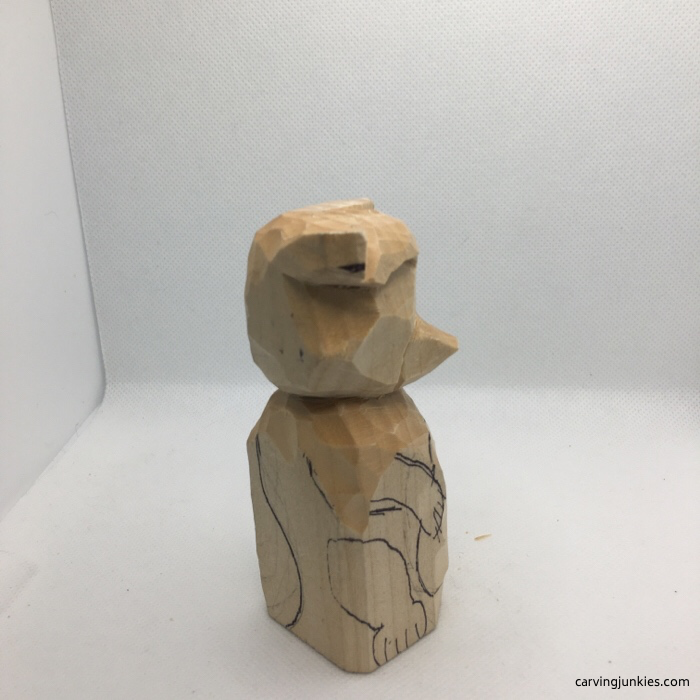 19. Round the corners all around
19. Round the corners all around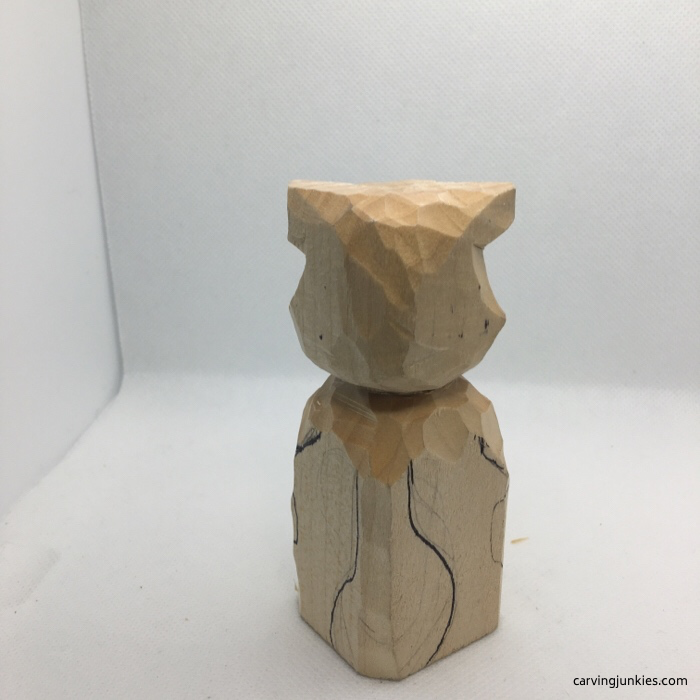 21. Back view
21. Back view8. Define the arms
- Remove wood under the neck to create a pot belly. We redrew the arms to criss-cross on the lower body. Raccoons have ugly fingers and claws so ours are less realistic (photo 22).
- Remove wood between the legs (start with a V-cut) and round the bottom of the belly (photo 22).
- Define the shoulders, which are wide at the top. The arms are narrower closer to the fingers (photos 22, 23).
- Use sweep cuts to further shape the face so it angles out around the snout (photo 22).
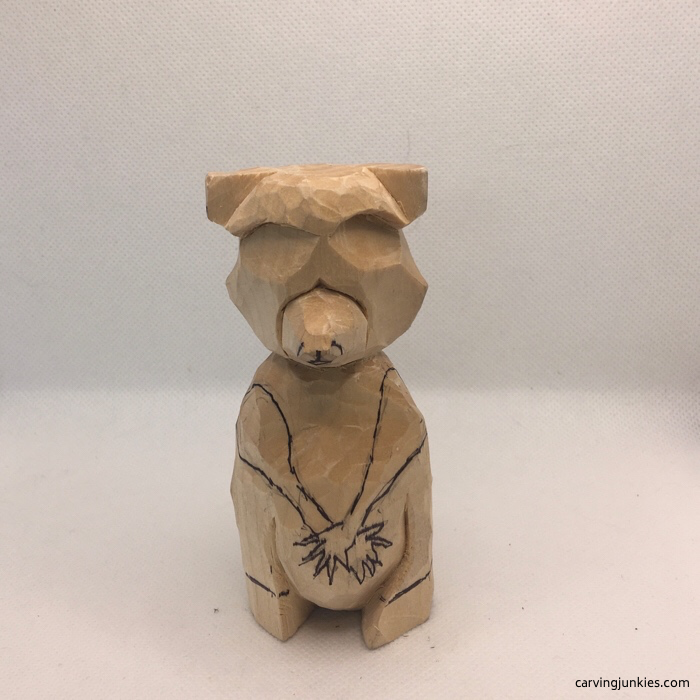 22. Arms redrawn and top of belly takes shape
22. Arms redrawn and top of belly takes shape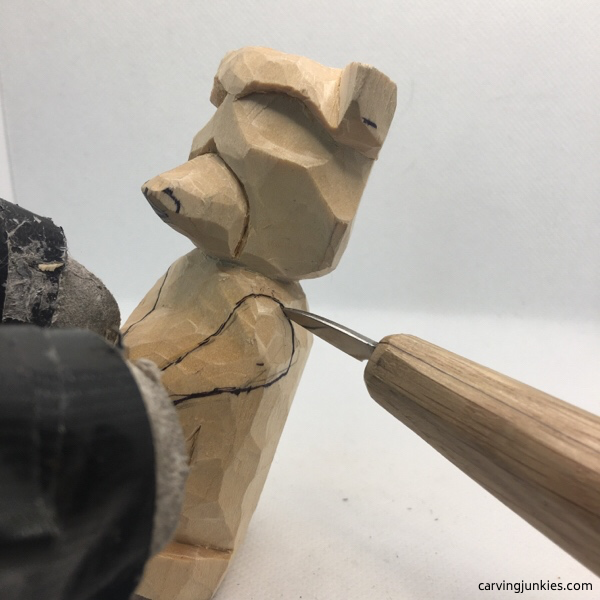 23. Define the arms
23. Define the arms9. Define the feet and toes
- Define the arms (photo 24) using line cuts (or stop cuts).
- Carefully use triangle cuts to define the claws (go slow as they are fragile).
- Draw lines for the claws on the feet (photo 25).
- Use V-cuts to separate the claws (photo 26).
- Carefully cut downward at a slight angle to remove wood from the top of the feet (photo 27).
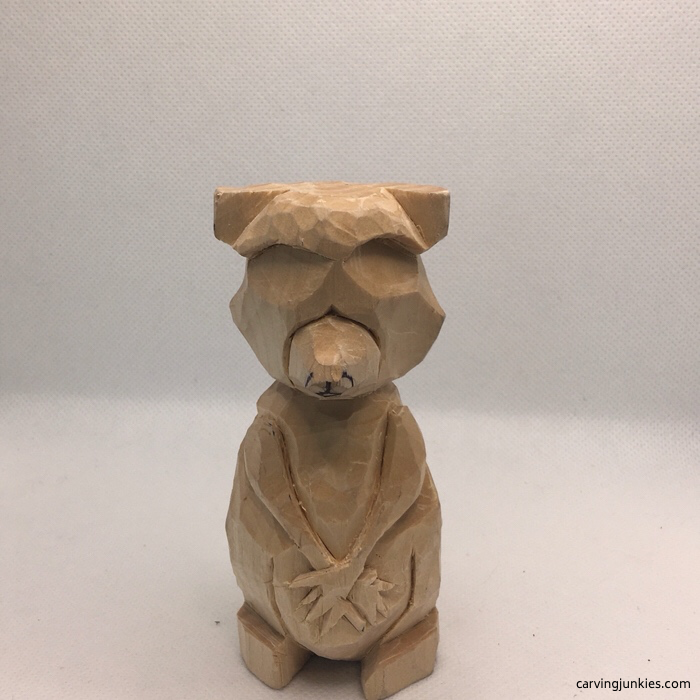 24. Arms and claws are defined
24. Arms and claws are defined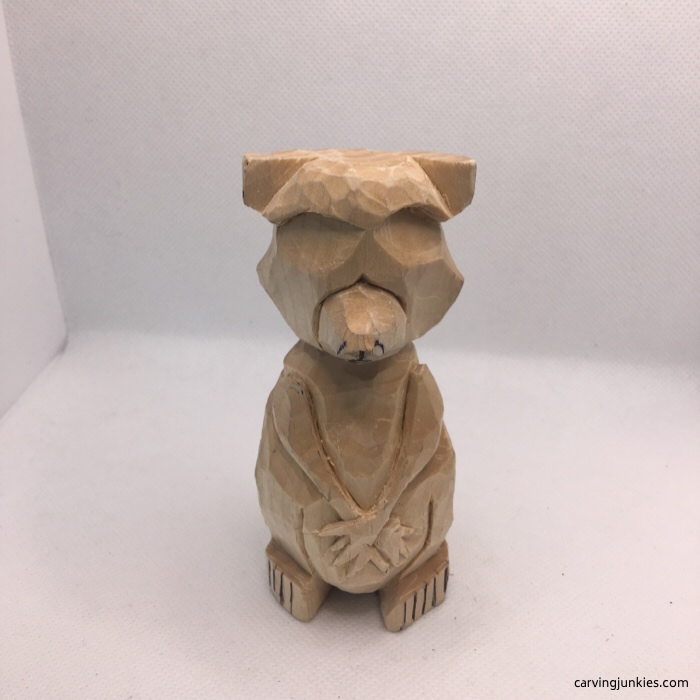 25. Lines added for claws on feet
25. Lines added for claws on feet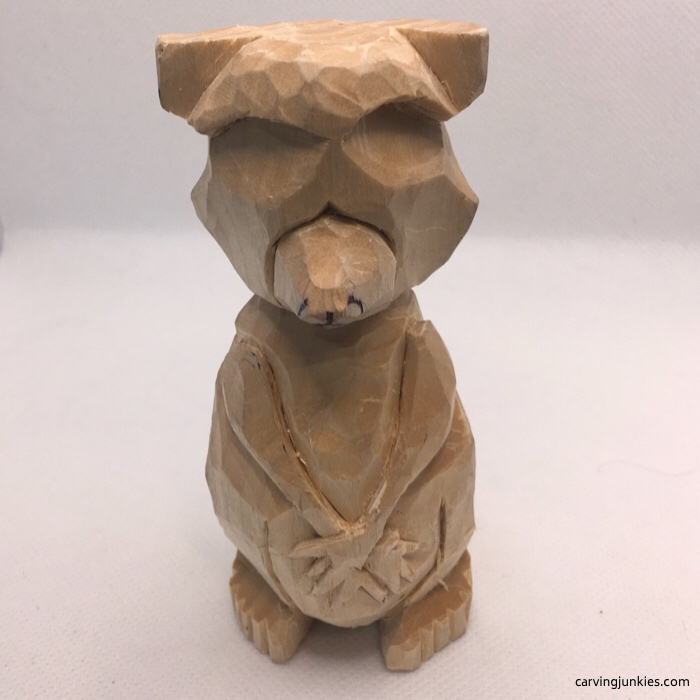 26. V-cuts are used to define the claws
26. V-cuts are used to define the claws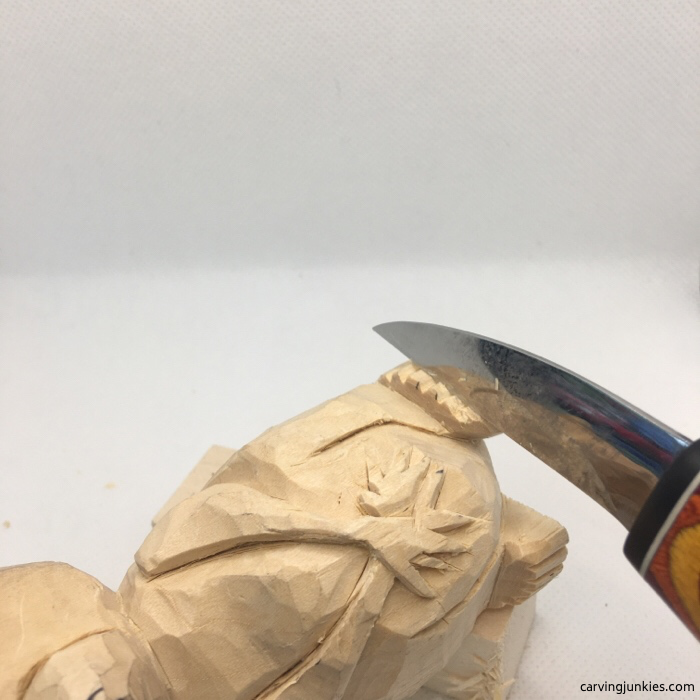 27. Cut at an angle to further shape the feet
27. Cut at an angle to further shape the feet10. Shape the ears
- Reduce wood above the eye socket and draw guidelines for the ears (photo 28).
- Shape the ears and reduce more wood in between the ears (photo 29).
- Use a U gouge to carefully scoop wood out of the ears (photo 29). If you don't have one, carefully make a small triangle cut.
- Round the sides of the body (if needed) so the raccoon wood carving will not look boxy (photos 28,29).
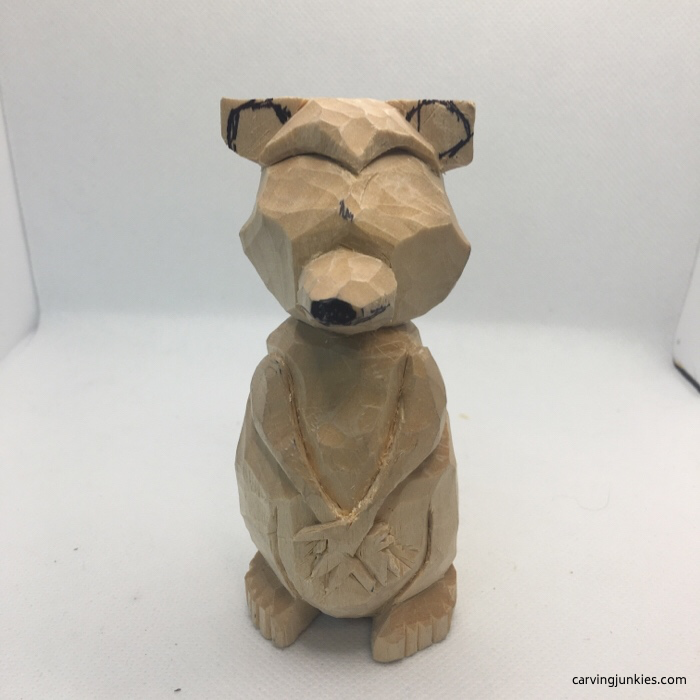 28. The ears are drawn
28. The ears are drawn 29. The ears are cut
29. The ears are cut11. Draw lines for the eyes and fur
- Use a pencil to draw the direction of the fur lines (photos 30-33).
- Start from the middle and work your way out. Vary your lines (short and long).
- Draw a triangle eye socket on each side. Raccoons have beady little eyes that will be painted on (photo 30).
- Use a stop to create the line for the mouth and remove a little wood beneath it (photos 31, 32).
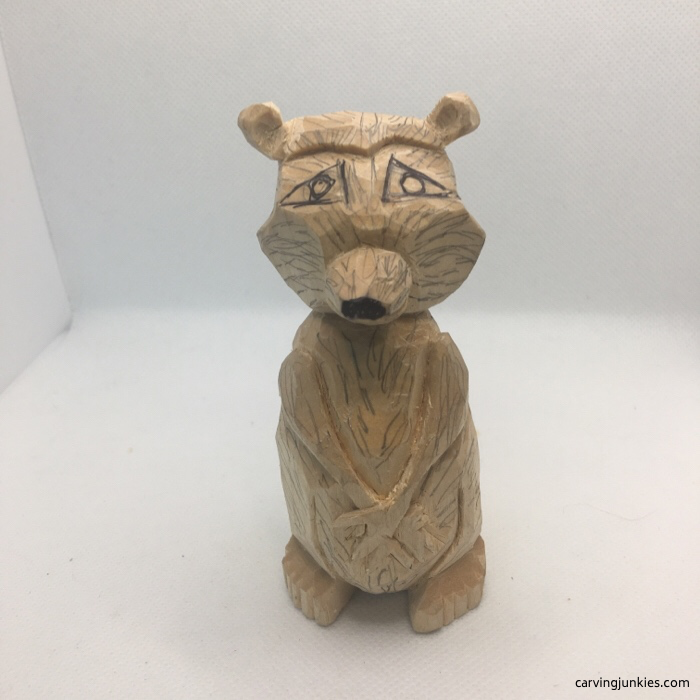 30. Fur guidelines and eye sockets are added
30. Fur guidelines and eye sockets are added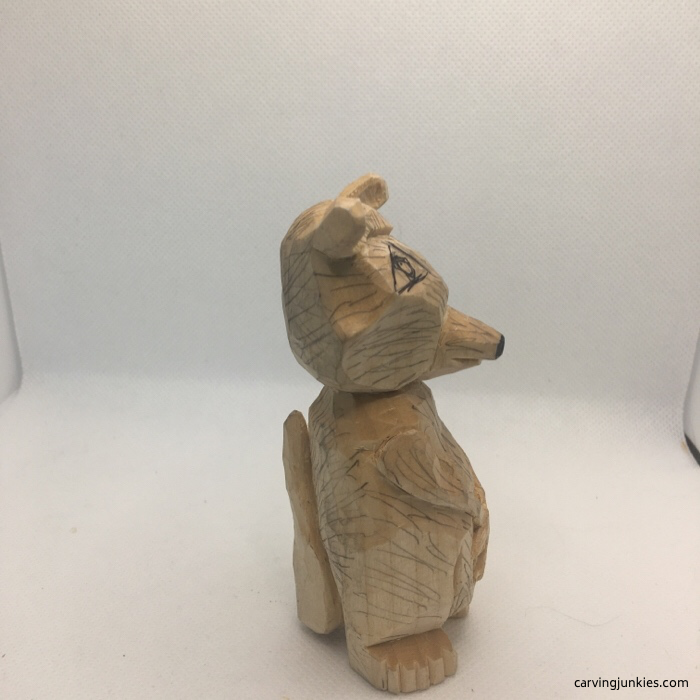 31. Right side view
31. Right side view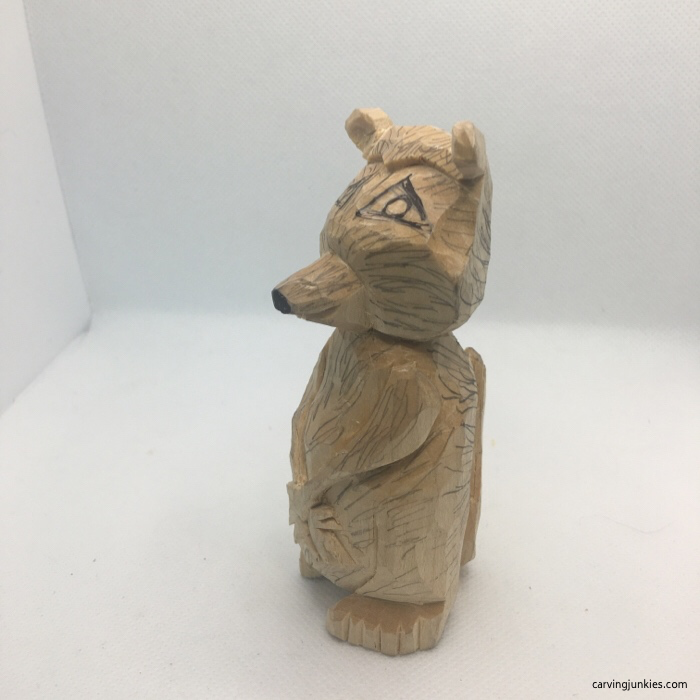 32. Left side view
32. Left side view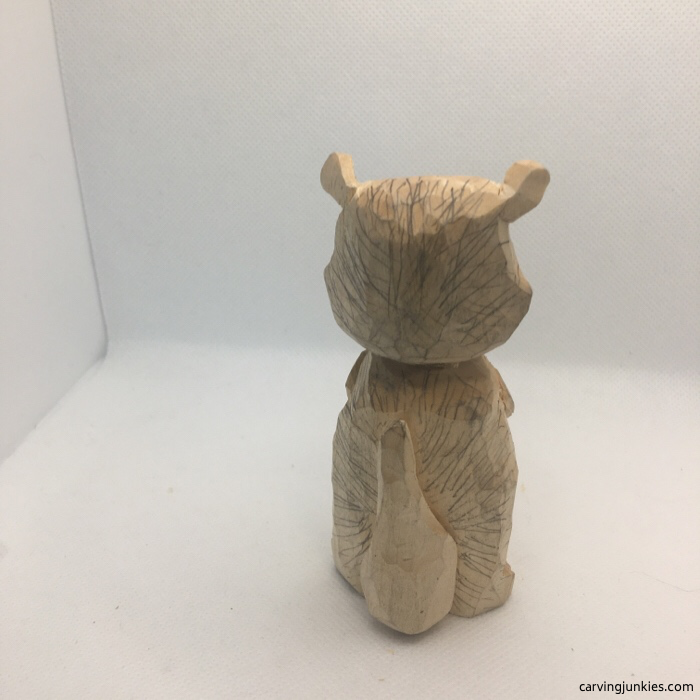 33. Back view
33. Back view12. Cut the fur lines
- Cut the outline of the triangular eye socket (photo 34).
- Use a V-tool to cut the fur lines. You can substitute a knife but it may take longer (photos 34-37).
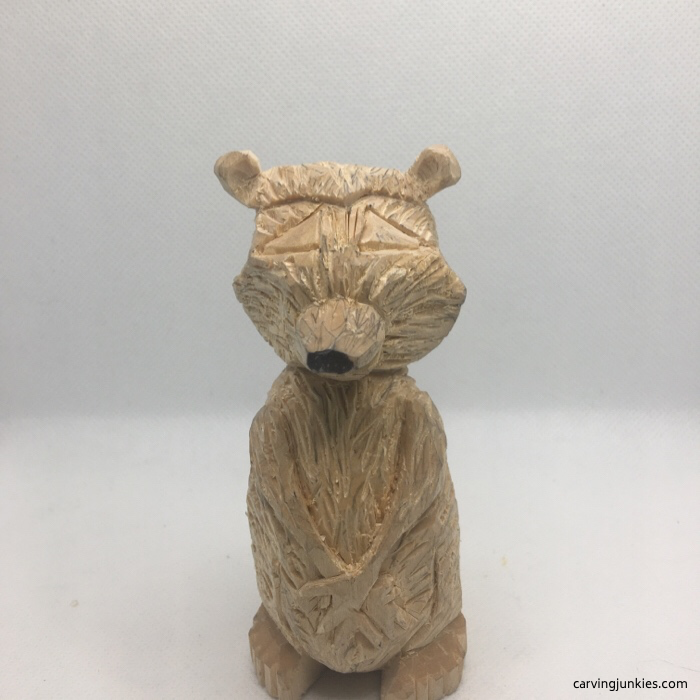 34. Eye socket is defined and fur is cut
34. Eye socket is defined and fur is cut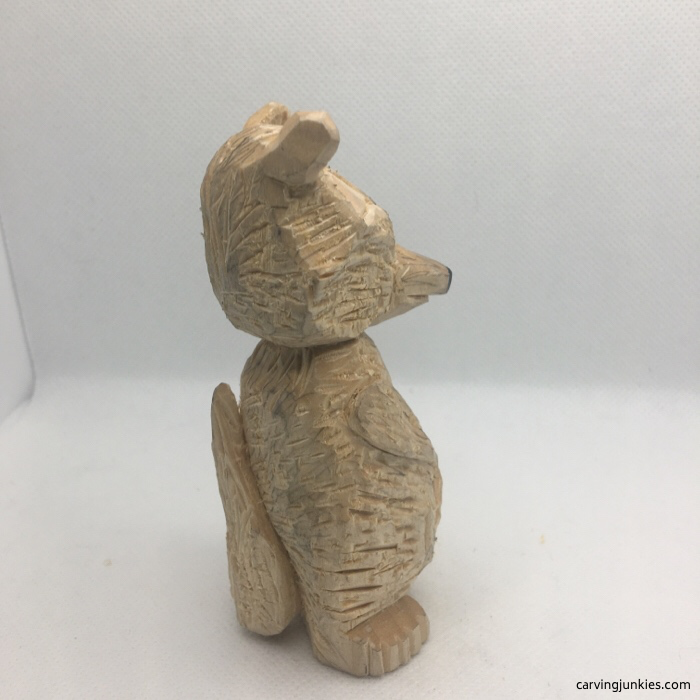 35. Right side view
35. Right side view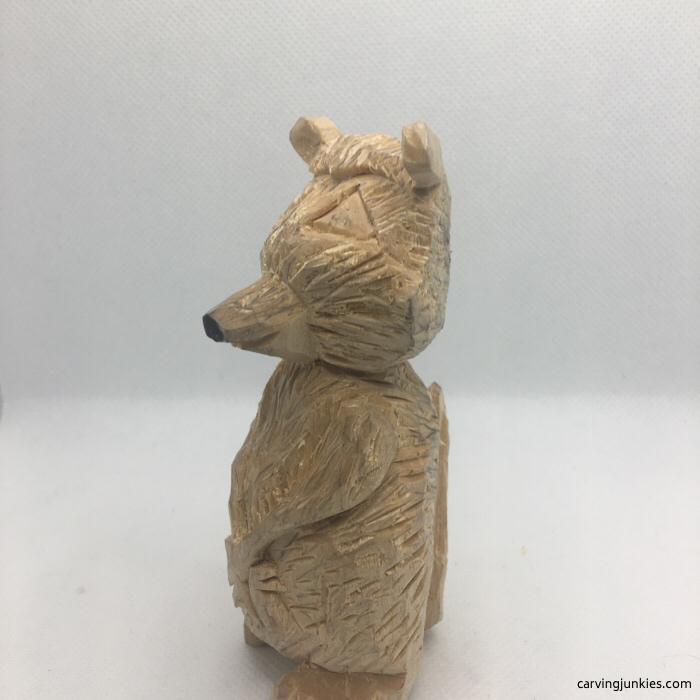 36. Left side view
36. Left side view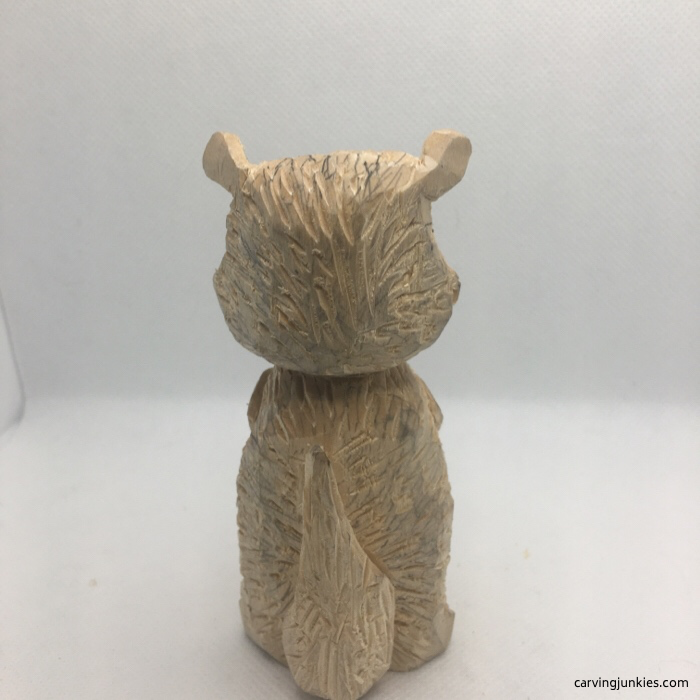 37. Back view.
37. Back view.13. Prepare the raccoon wood carving for painting
- Wash the raccoon with soap and water (using dish soap) to remove pencil marks and soil.
- We paint our carvings while they are wet to prevent color bleeding.
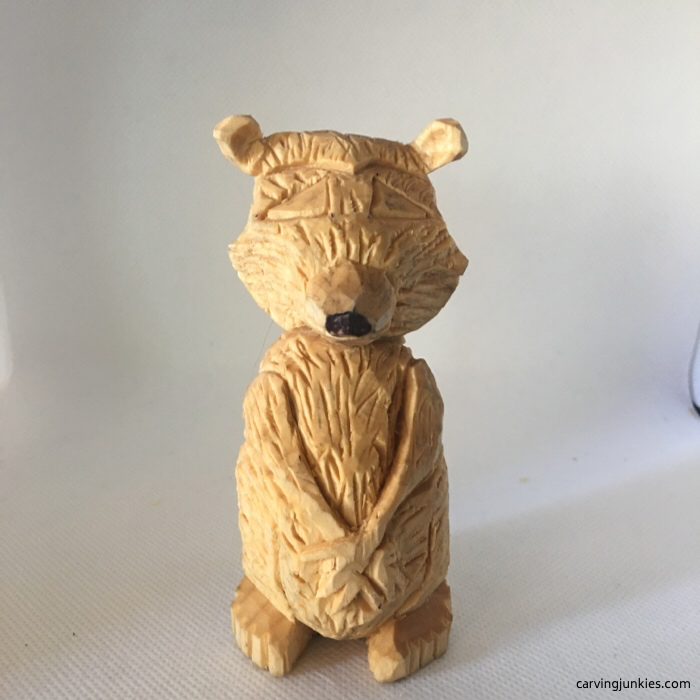 38. Ready for paint
38. Ready for paint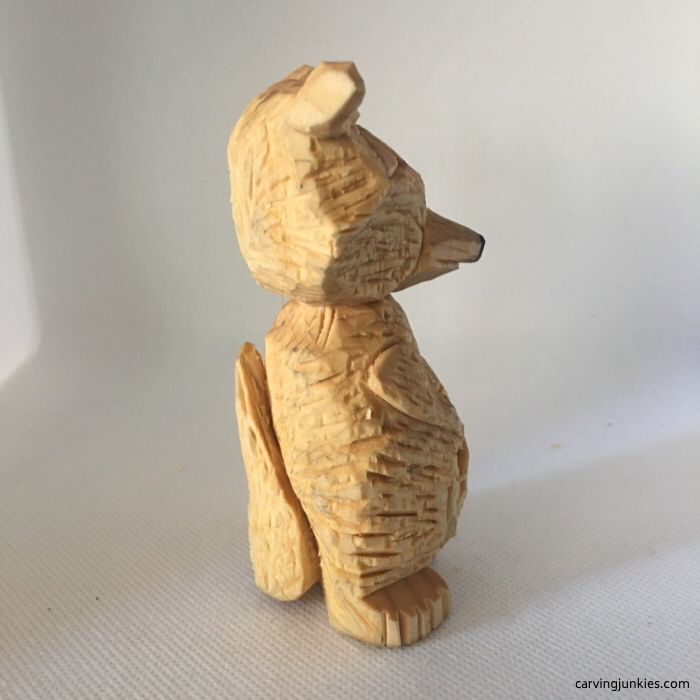 39. Right view
39. Right view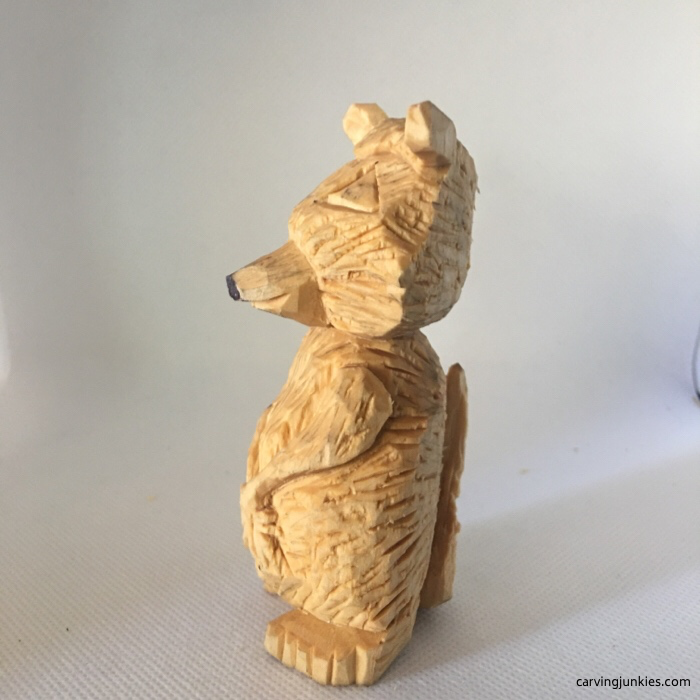 40. Left view
40. Left view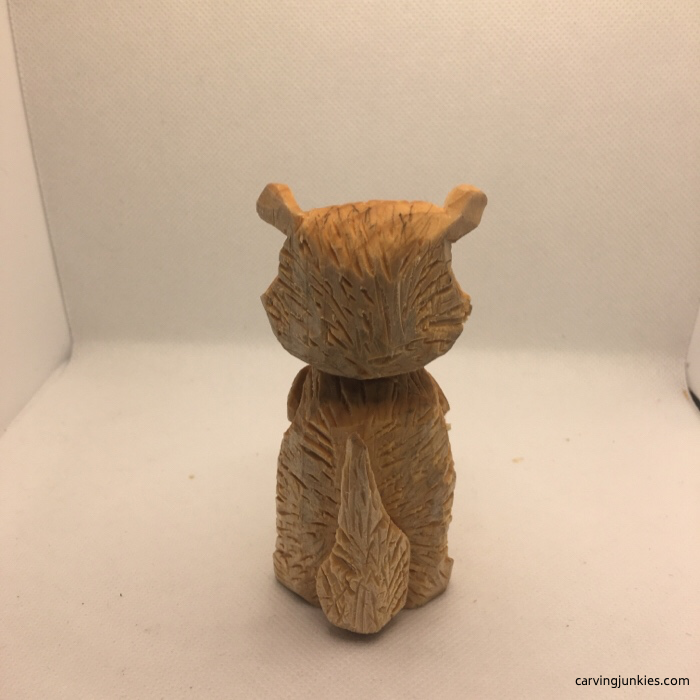 41. Back view
41. Back view14. Painting the raccoon wood carving
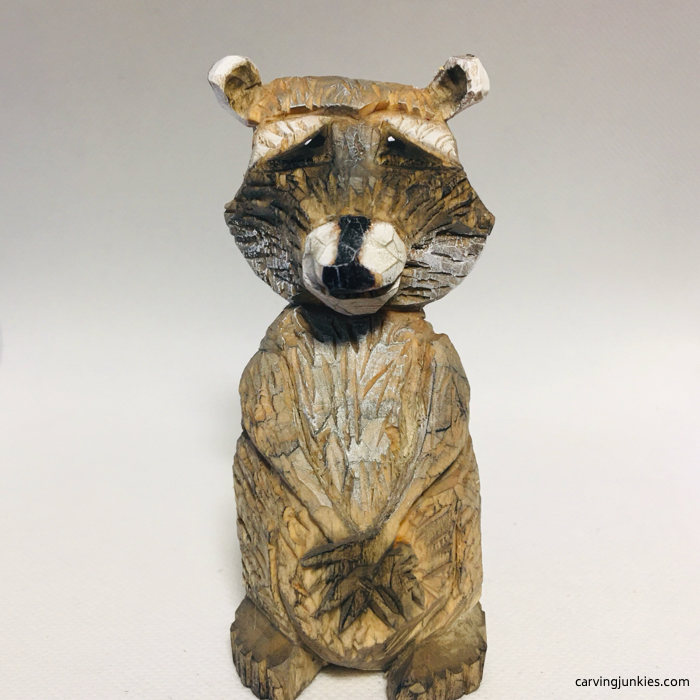 42. Finished raccoon wood carving
42. Finished raccoon wood carving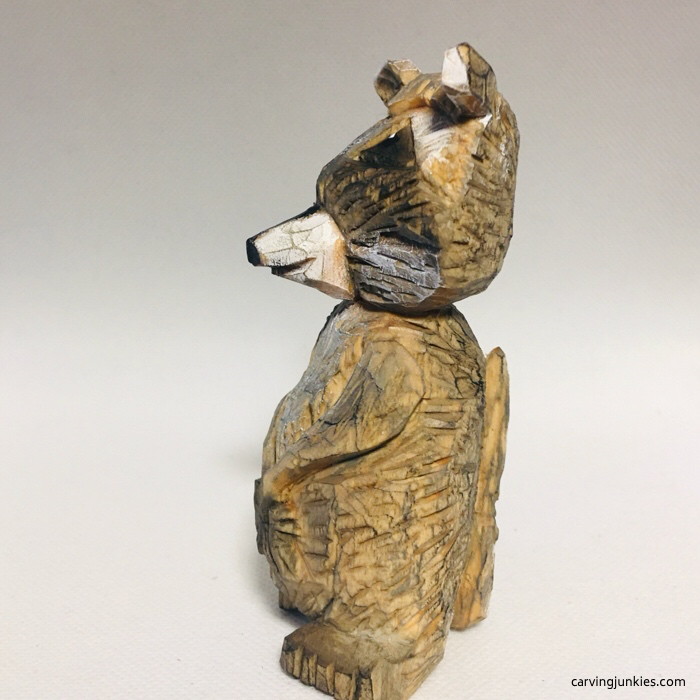 44. Final left view
44. Final left view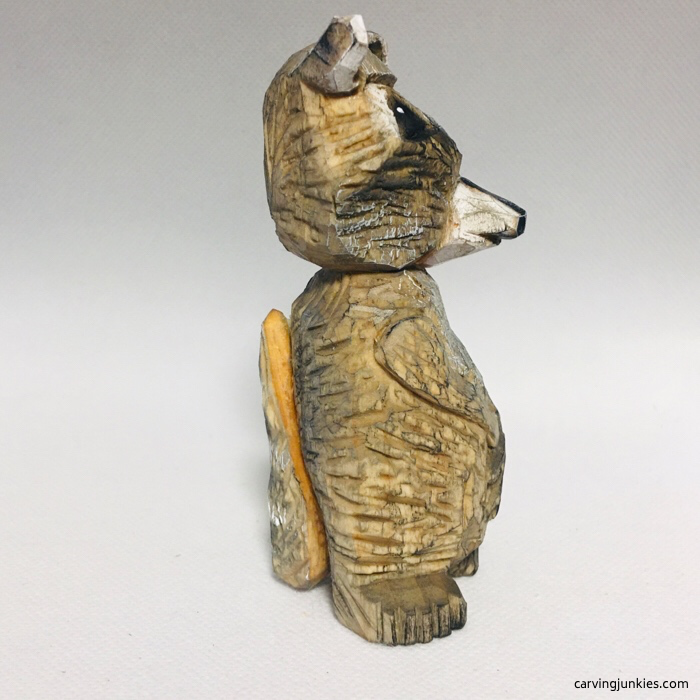 43. Final right view
43. Final right view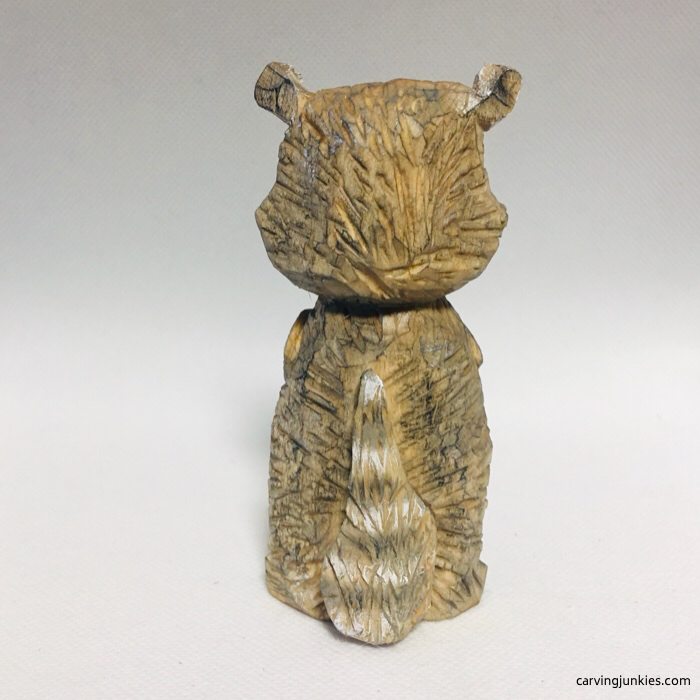 45. Back view of multi-colored tail
45. Back view of multi-colored tailTo get this look
The raccoon wood carving is painted in several layers. Be sure to allow the paint to dry between layers. Note: He looks more gray in natural light as above.
Here is the order we use the paints (all are from CraftSmart except the titanium white, which is from Artist's Loft):
- Round nose and bridge of nose: black magic marker.
- Entire body: 2 drops dark gray paint mixed with 1 capful of water (we painted while camping and forgot our eyedropper!).
- Snout, above the eyes, edge of ears, front legs and chest: dry brush with 100% titanium white.
- Eye sockets, back legs, area around the snout, inner ear, and front claws: 1 drop black paint mixed with 1 capful of water.
- Eye sockets, inner ears, and fur around snout: dry bush sparingly with 100% black paint.
- Beady eyes and mouth line: black magic marker.
- White specs in eyes: 100% titanium white using a toothpick.
- Entire body (pick areas you want to highlight to give the fur a mottled color effect):
- Layer one: dry brush with 100% dark gray.
- Layer two: dry brush with 100% titanium white.
- Layer three: dry brush with 100% black (sparingly).
Finishing
After painting, we brush the raccoon wood carving with mineral oil and wipe it down after 10 minutes. Then we apply Howard's Feed and Wax for 20 minutes and polish with a soft cloth.*
*Immediately dispose of paper towels or cloths in the garbage outside as they can spontaneously combust.
Summary
- Carving this raccoon can bring you hours of enjoyment.
- Dry brushing adds texture and interest while painting the raccoon wood carving.
- To learn more about raccoons and see real photos visit this website.
Get 50 Wood Carving & Painting Tips
FREE when you join our free Covered in Chips Club
Your information is 100% private and is never shared. Unsubscribe anytime. See our Privacy Policy .
Share page on:
Home | Privacy Policy | Terms of Use | Contact | Sitemap
